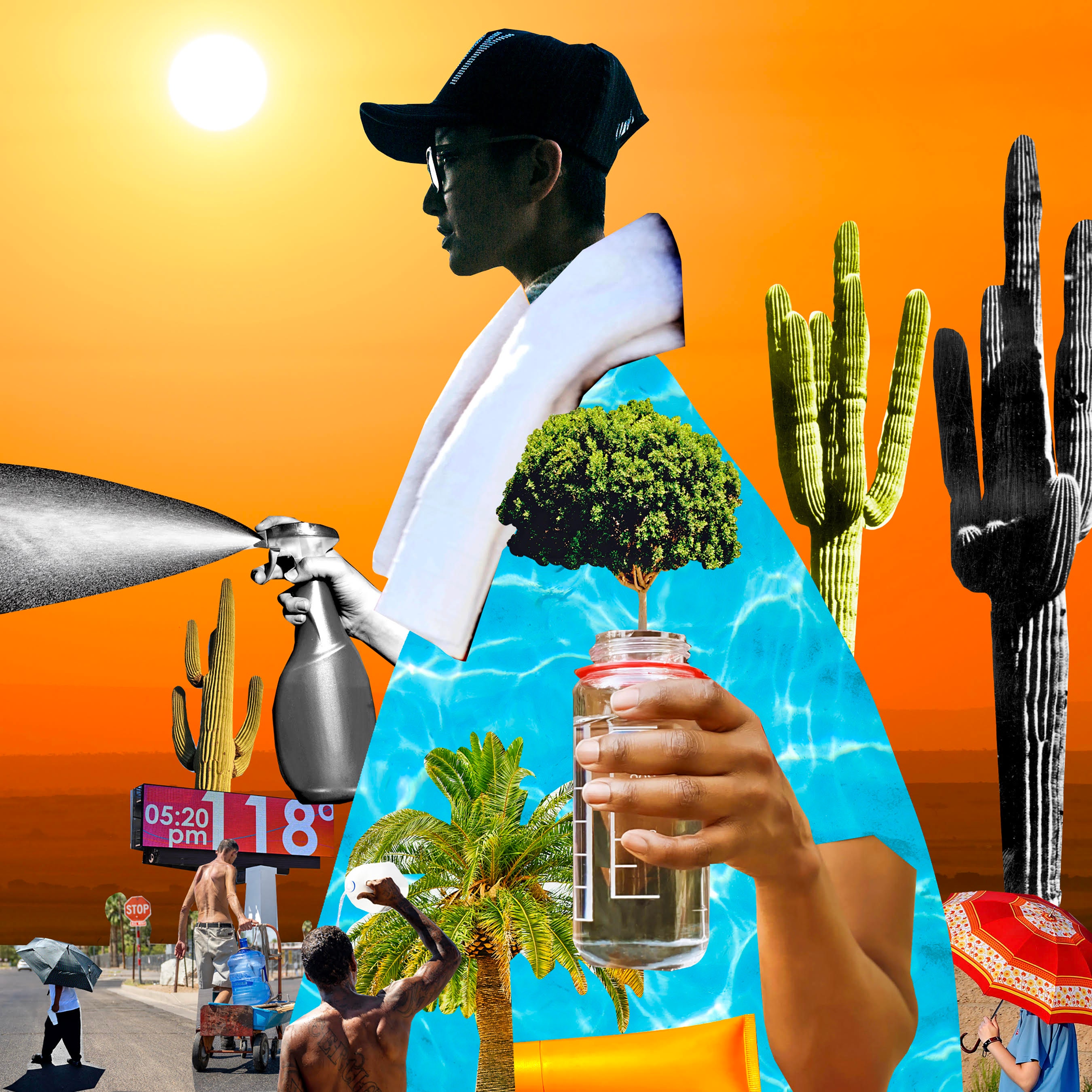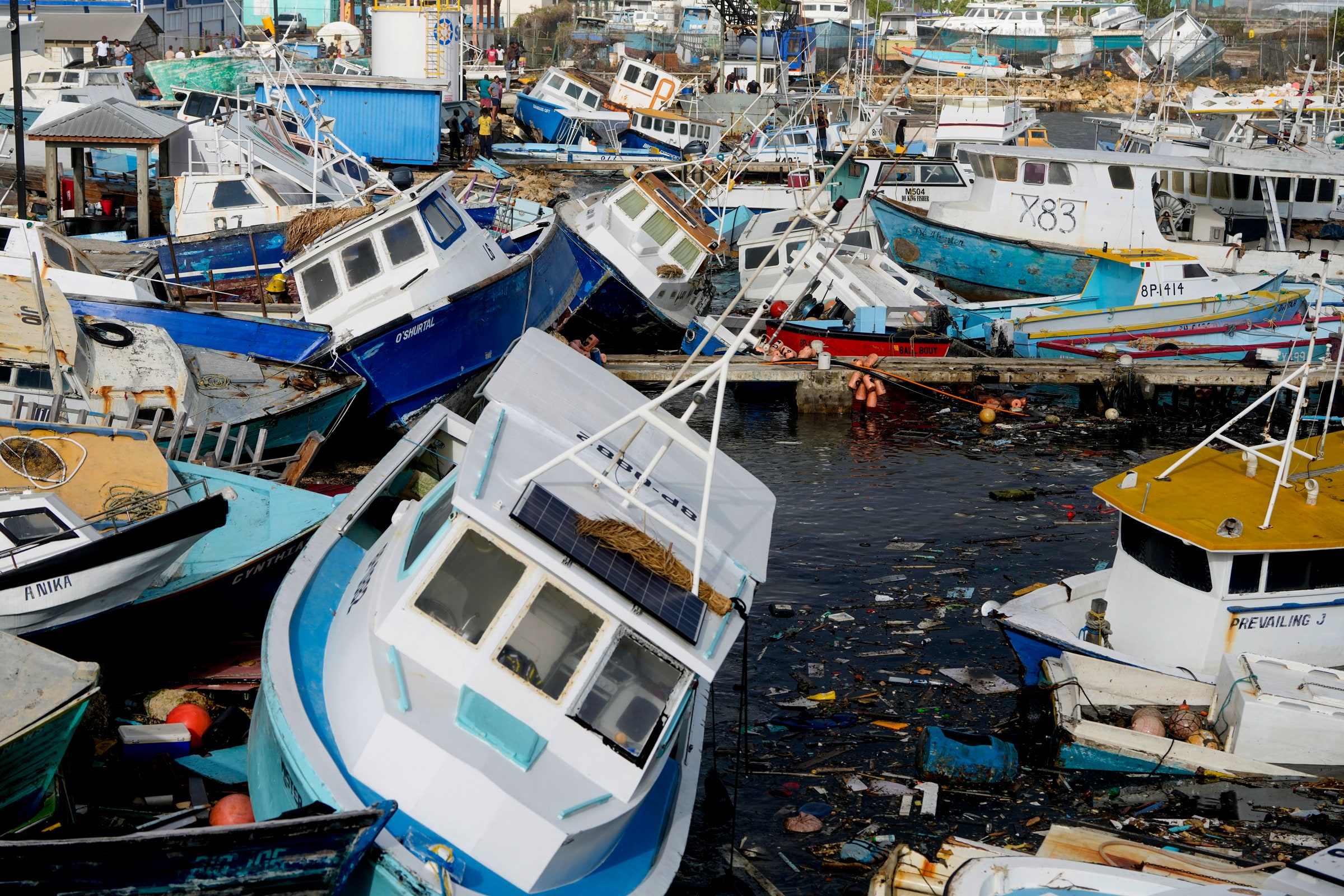Climate Change Has Fried Earth So Badly Trees Won’t Save You Today—But I Will

The deadliest environmental threat to city dwellers worldwide isn’t earthquakes, tornadoes, flooding, or fire. It’s heat. By June this year, more than 1.5 billion people had spent a day in life-threatening temperatures above 103 degrees Fahrenheit, according to an analysis by The Washington Post. In Phoenix, Arizona, where almost 400 people died from heat exposure last year—and where falling on the pavement can leave a third-degree burn—the question isn’t whether this summer’s heat will kill people, it’s how many.
The answer hinges, in part, on a small team the city created in 2021 to deliver aid during heat emergencies: handing out supplies, opening relief centers, and even driving a bus to bring cool air to where it’s most needed. The team is also trying to make Phoenix cooler over the long haul by finding space for shade trees—which is a major challenge in the city center. As the adage goes, the best time to plant a tree is 20 years ago. So in the meantime, there’s triage.
Here, one member of the city’s Heat Response and Mitigation Office tells WIRED what it’s like to go out on the streets day after day in temperatures that reach 110 degrees or higher.
When a tornado comes through, you can see houses are ruined. With heat the damage is not as visible. You see it in the numbers. Everyone’s like “dry heat this” and “dry heat that,” but it’s dangerous.
I’m constantly trying to keep my body ready for those higher temperatures. I drink electrolytes 24/7, year round. I work outdoors or I hike during our shoulder seasons to get ready. If you slowly acclimatize yourself, the hope is that when it does hit those triple digits, it won’t affect you too badly. And then when the summer is here, I make sure I’m wearing appropriate clothing, I’m not taking in too much caffeine. I’m trying to get cool. I’m trying to keep my volunteers cool. I call myself Mama Heat. I’m always asking people, have you been drinking water? They say they’re fine. No, you need to drink water, you need to sit down for a moment, you’ve got to get in the shade. If you start getting dizzy or nauseous or if you stop sweating, I need you to go get some AC. Which is why we set up cooling centers around the city. They’re open from May to September. We’re constantly adding in new hydration stations and cooling centers, based on where the need is.
I want to be where I know the problem is. If you’re out here battling the heat, I’m going to be out here battling the heat with you. And we’re going to work through this together and try to get you somewhere safe. We use 911 data to find out where the most vulnerable populations are. We know that those experiencing homelessness are at a greater risk. We see high numbers for those who are elderly also. And we work very closely with our airport and our communications team to make sure that our visitors know, hey, your body’s probably not acclimatized to this, you’re not ready for this. These are the symptoms that you may experience.
What’s different this year is, we’re one of the first cities to offer overnight cooling centers. Last year most of our cooling centers closed at 5 or 6 pm, but that didn’t mean the heat was turning off. We were seeing high numbers of 911 calls after hours. If you’re out there on the concrete, living in the urban heat island effect, you’re baking in that, whether it’s 90, 100, or 115. We need to have the same resources available. So we went back to leadership and said we need to have extended hours.
A lot of it is trial and error, which can be challenging. I might look at the data and say, OK, I see a lot of 911 calls happening over here, I’m gonna go do outreach. And so I go over there, and there’s actually not a lot of need. It turns out the calls were because it was close to a hospital. You need to be able to pivot on a dime. I’ll be honest, we had cooling centers previously that were just a little too far for people to get to. So we brought the cooling bus to them.
I think building out tree shade and cool spaces is important for a more livable, sustainable Phoenix. That’s what our office’s mitigation team works on: longer-term strategies for shade, planting trees. But what I have to focus on is, how am I keeping someone safe? Planting more trees is amazing, but that’s not going to save you today. And so that’s where I come in.
I have people in tears thanking me, because they see me out there every single day. You know, I’m not going to give up on you. It’s a life-or-death situation sometimes for these people. It might sound a little dramatic, but a bottle of water in someone’s hand is life-saving. And then there were people that I got into a vehicle with our Office of Homeless Solutions, and now they’re gonna go into temporary housing. If we could make more affordable housing, then I wouldn’t be needed.
My favorite part of the day is going down to the warehouse where we keep the heat kits. I turn on some music, I get into a zone, and start making kits. We put hats in there, sunscreen, cooling towels, and SPF liquid chapstick, because tube chapstick will melt. Our wide-brim hats are extremely popular. People love the Hydro Flasks. We provide shoes to people as they need it, because we see a lot of people out there in socks or bare feet. I know those kits are gonna go out the door and immediately serve somebody who’s in need. I love to do that.
—As told to Camille Bromley
Image source: Getty Images




